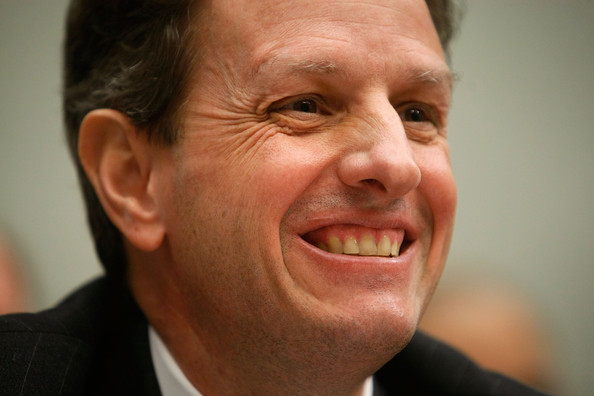Flashback:
– Presenting The S&P500’s 50 Point Surge Courtesy Of The Illegal “Geithner Leak” (ZeroHedge, Jan 19, 2013):
Yesterday we broke the news of what is prima facie evidence, sourced by none other than the Federal Reserve’s official August 16, 2007 conference call transcript, that then-NY Fed president and FOMC Vice Chairman Tim Geithner leaked material, non-public, and very much market moving information (the “Geithner Leak”) to at least one banker, in this case then Bank of America CEO Ken Leiws, in advance of a formal Fed announcement – an act explicitly prohibited by virtually every capital markets law (and reading thereof). It was refreshing to see that at least several other mainstream outlets, including Reuters, The Hill and the NYT, carried this story which is far more significant than Season 1 of Lance Armstrong’s produced theatrical confession and rating bonanza. It is notable that Richmond Fed’s Jeff Lacker who made the inadvertent (or very much advertent) disclosure has not backed down from his prior allegation and told the NYT yesterday that “My understanding was that President Geithner had discussed a reduction in the discount rate with these banks in connection with these initiatives.” What, however, the mainstream media has not touched upon, yet, is just how profound the market response to the Geithner Leak was, and by implication, how much money those who were aware of what the Fed was about to do made. Perhaps, it should because as we show below, the implications were staggering. But perhaps what is even more relevant, is why the Fed’s previously disclosed details of Mr. Geithner’s daily actions at the time, have exactly no mention of any of this.
Backstory
Before we get into the prime of today’s narrative, a quick detour.
Read morePresenting The S&P500’s 50 Point Surge Courtesy Of The Illegal ‘Geithner Leak’

